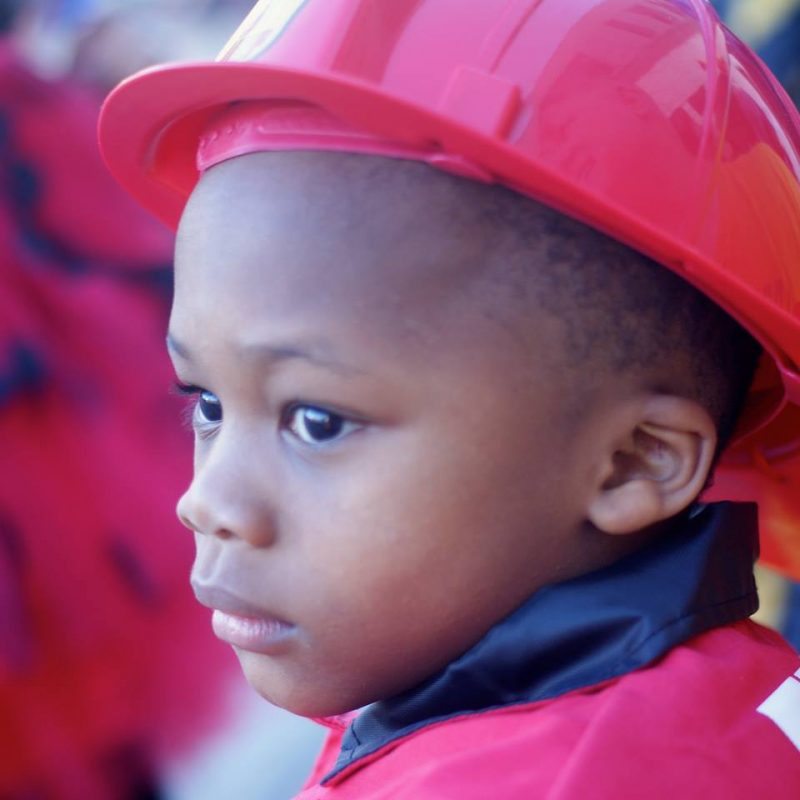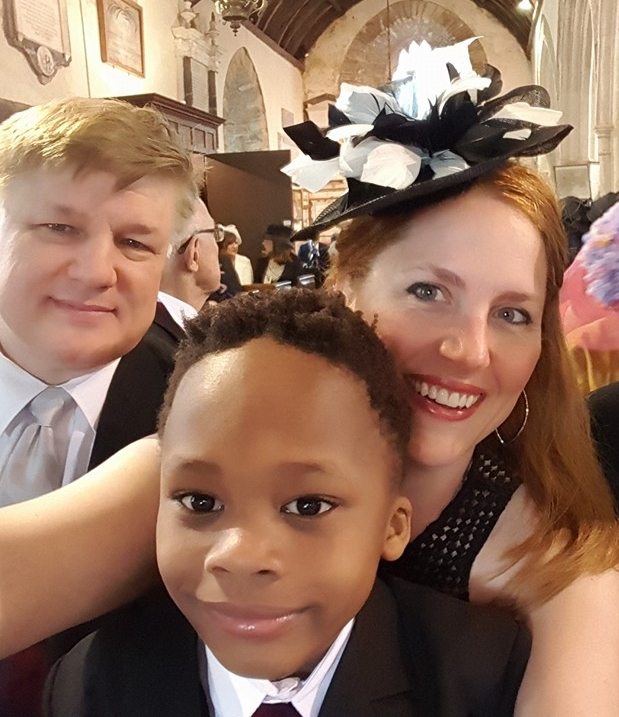 I thought I had time…
I thought I had time…
When my adopted son first came home with us from the hospital, I thought I had time. Time to prepare for his experiences as a Black man in a mainstream White world. So I tended to my newborn babe with late night feedings, diaper changes, songs and snuggles.
By 18 months of age when he had started walking and talking, I thought I had time to figure out how to deal with and guide him through his inevitable experiences of racism. According to everything I had studied and read about transracial adoption and identity, I thought I had until he was about 8 years old before he would face the inevitable.
By three years of age, he had started attending a LifeWays program and my main concern was whether the other children would make fun of him for wearing dresses or choosing pink clothes. I thought I had 4 or 5 years yet before he would get the message “You can’t/you don’t… BECAUSE YOU ARE BLACK.”
Then one day, it happened. In a warm and loving early childhood center, it happened. When he was four years old, in the playground when he wanted his playmate to share a toy, the boy (White) declared that “Black children don’t get to play with it.”
Jaw dropping, isn’t it? If I had been there, I’m sure I would have been speechless. Until I saw my son’s reaction at home, I wouldn’t have said anything. I would have kept a positive frame of mind that this was a rare, unusual occurrence and would be quickly forgotten by the children. My LifeWays Early Childhood Training taught me not to intervene in peer-to-peer squabbles unless necessary. As hard as it is as adults to process what is going on for both children when they speak of skin color, I can tell you that it is absolutely necessary for caregivers to address the situation — on the spot — no matter how awkward or uncomfortable they feel. Sweeping this moment under the rug would not serve either of the children well in the long run.
A few months earlier, a slightly younger toddler peer (White) told him during parallel play that he couldn’t play with her because he has brown skin. My son never mentioned this exchange to me. After she declared exclusion, the little girl was promptly told by the adult caregiver firmly and matter of factly, “No, you two are friends. Now GO PLAY.”
With that, my son and the little girl were sent off to do their work, which is to learn through play. The caregiver was able to successfully use very few words and direct them back into physical movement (playing outside). Such a quick exchange, yet so powerful. In one fell swoop, the needs of both children were met. One child was guided back to what we expect of our children in regards to inclusion, and the other child (my son) witnessed it. Social justice is never complete when it happens behind closed doors as a private conversation with only one party. Through witnessing the exchange, my son’s sense of worth as a human being was validated and supported; this was a powerful piece of immediate healing for him. Knowing that a trusted adult stuck up for my son gave him solid footing and the confidence needed to forge on in the playground that morning with his self-worth intact. In that brief but potent moment, peer relationships were fostered and the caregiver-child relationship was deepened.
His experience both times was, “Who will stick up for me? Stick with me? Who can I trust? When I am hurting and don’t have the words, who will model for me what to say?”
It’s all about trust. He needed someone to listen to him on the playground when the boy gave skin color as a reason for exclusion – he had asked a caregiver for help that day and wasn’t heard. Quite honestly, toddlers having to step forward and approach an adult to tell them what happened isn’t good enough, it’s already too late. For three days, he sat with the message that “What you come into this world with just isn’t good enough to be allowed to play with a toy” before he finally came to me and told me one evening at home what had happened. That internalized message continually chips away at my son’s sense of life and the core of who he is as a person. He never told me about the little girl, because he didn’t need to. The adult addressed her promptly and in the present tense. His caregiver acted justly and quickly, and from that my toddler felt protected. He didn’t need to ask her for help because she had already given it.
My son was born Black in America, so I don’t have time to wait until he’s in grade school to teach him about racism. What I have learned from my child is that silence in an unjust situation speaks loudly and stays deep in a hurting heart. Think of that the next time you hear an ignorant or racist comment and think that just because the children involved are so very young, that it won’t last, that it meant nothing. Because of his recent experiences, I have learned to speak up, immediately, even if my choice of words is imperfect (I’ll get there eventually through practice). Speaking up right away is a means of supporting and standing with my son and my friends of color in these difficult moments. If you’ve ever thought, like I did, that you have time to address racism with your children because everyone in your family is White, it might be time to rethink your circle of influence. Being a part of any size community that includes a child of color brings this consciousness forward to all members of the community. As a White adult, responding to the slightest color-based injustice is community support. And its ripple effect slowly transforms our society to one where children do not use skin color in developmentally appropriate power struggles. Exclusion based on skin color is not acceptable at even the youngest of ages. We are responsible, not powerless, as parents and caregivers to guide our children as they explore peer-to-peer power dynamics. The time to address racism is the very moment it happens.
How do we find the words or know what action to take? Even with small children, we can find developmentally appropriate responses and engagement. It starts by listening. Listening to others in our community, especially persons of color. There is much to be said, and much to be heard. Let dialogue be the starting point with other adults (caregivers with their co-workers within the staffing structure, parents with caregivers and parents with parents); and when the conversations get tough or confusing, stay the course and stick together, still dialoguing, until it is less confusing. As we can see from the example of these toddlers, children are not color blind. Color blindness is an impossible goal, whereas open dialogue and acts of social justice are attainable and honor the reality of the world around us. So let’s start speaking truthfully about what we see and how it makes us feel, and the children will learn through us how to talk about what they also see. I can’t tell you the perfect thing to say or do in a situation like this, because I am learning and fumbling and bumbling my way through it too. But the caregiver who spoke up immediately did the right thing and planted a seed for the children and also for me. She showed me that it is possible and achievable for each and every one of us.
Any community, no matter how diverse, can protect children of color by engaging with those brief, unexpected moments of racism; by speaking up for all the children to hear. The power of our words and actions surely plant the seeds of strong and healthy trees. When every child witnesses an adult speak with love to a child of color, when every child sees and hears a caregiver embrace and address an ignorant comment, the seeds of racism are not allowed to grow. And my child can feel safe and at home with his caregivers and the richly varied world community in which we live.
“A healthy social life arises when the whole community finds its reflection in the mirror of each person’s soul, and when the virtue of each person lives in the whole community.”
~ Rudolf Steiner
 Jenn and her family live in Milwaukee, Wisconsin. She is a sign language interpreter for the Deaf and Hard of Hearing and a recent LifeWays graduate.
Jenn and her family live in Milwaukee, Wisconsin. She is a sign language interpreter for the Deaf and Hard of Hearing and a recent LifeWays graduate.
